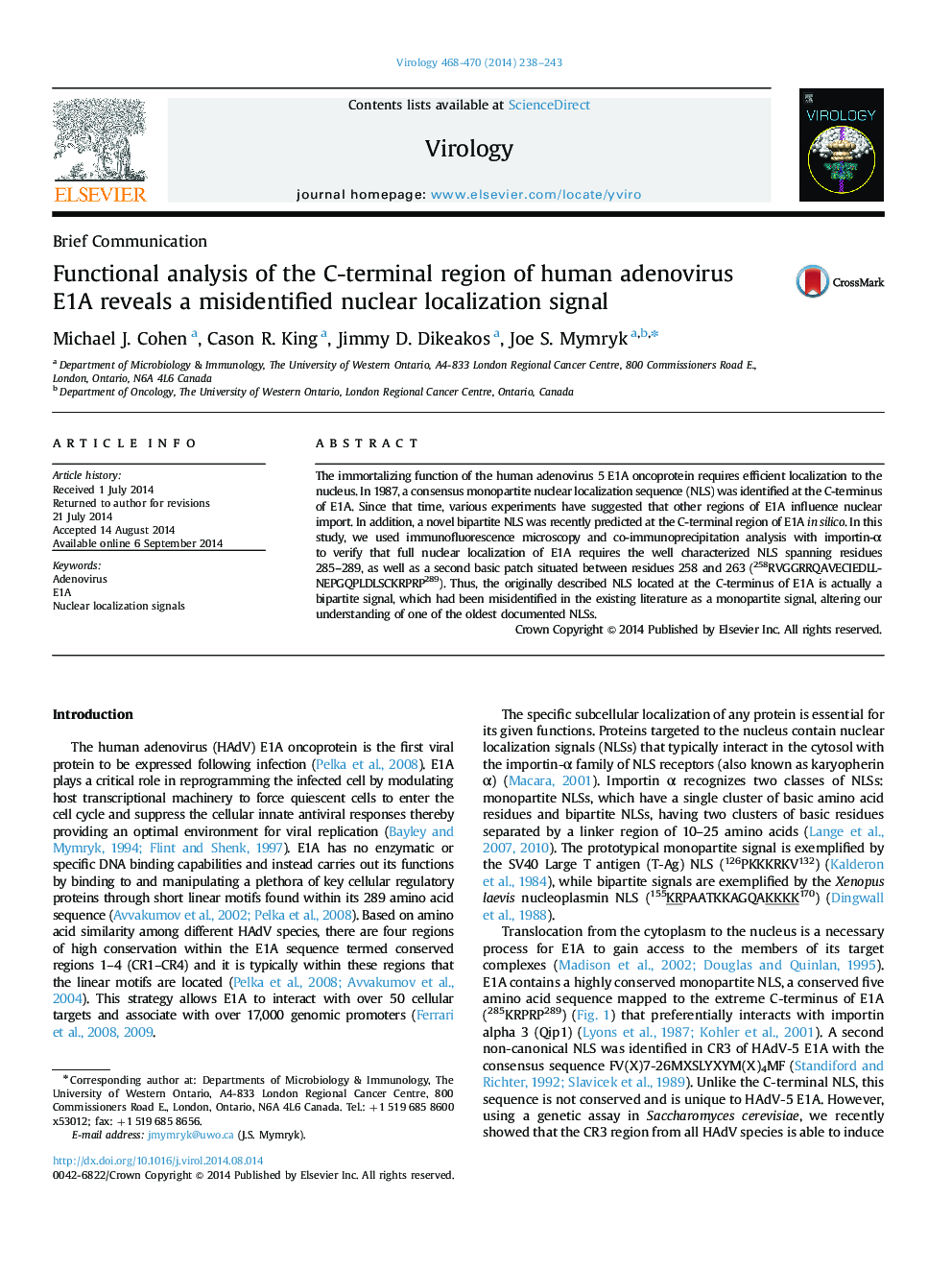| کد مقاله | کد نشریه | سال انتشار | مقاله انگلیسی | نسخه تمام متن |
|---|---|---|---|---|
| 6139885 | 1594244 | 2014 | 6 صفحه PDF | دانلود رایگان |

- Human adenovirus E1A is localized to the nucleus.
- The C-terminus of E1A contains a bipartite nuclear localization signal (NLS).
- This signal was previously misidentified to be a monopartite NLS.
- Key basic amino acid residues within this sequence are highly conserved.
The immortalizing function of the human adenovirus 5 E1A oncoprotein requires efficient localization to the nucleus. In 1987, a consensus monopartite nuclear localization sequence (NLS) was identified at the C-terminus of E1A. Since that time, various experiments have suggested that other regions of E1A influence nuclear import. In addition, a novel bipartite NLS was recently predicted at the C-terminal region of E1A in silico. In this study, we used immunofluorescence microscopy and co-immunoprecipitation analysis with importin-α to verify that full nuclear localization of E1A requires the well characterized NLS spanning residues 285-289, as well as a second basic patch situated between residues 258 and 263 (258RVGGRRQAVECIEDLLNEPGQPLDLSCKRPRP289). Thus, the originally described NLS located at the C-terminus of E1A is actually a bipartite signal, which had been misidentified in the existing literature as a monopartite signal, altering our understanding of one of the oldest documented NLSs.
Journal: Virology - Volumes 468â470, November 2014, Pages 238-243